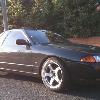Oil Shooting Out Of Dip Stick
Announcements
-
Similar Content
-
Latest Posts
-
The fancy pants red shock tower brace is finally incoming from MX5 Mania, getting it shipped from 'Merica has been a long and problematic process, and GWR, the 'Merican supplier will not ship directly to consumers outside of the US, Mania basically had to order a heap of them, the colour choice was silver, or red, and we all know anything red adds 5 killerwasps of dynotorques..... Whilst it does fit over a 2.5, and I've seen a few photos and videos of it being installed and fitting, google also says it might get real close to the FAB9 intake front runner, people in the US says it does fit with the FAB9 intake, except for one person who said it slightly touched.......so there is that.....LOL..... As it seems that I am the first in AU to have this combination of parts there's no local knowledge about fitment, so I'm just a willing guinea pig in this endeavour, I'll cross my fingers and toes and hope for the best In other news, I ordered stuff from China on the same day I ordered the 23° silicone bend from Victoria, the stuff from China arrived a day ago, the 23° silicone bend is still travelling around Australia thanks to Australia Post, and "may" be here next week
-
Very good news...I contacted Racebox about it last night. My car is a 2016 so remains to be seen if it is compatible, requires a TCU swap, or is impossible.
-
What ECU are you running? This is probably the biggest question. If it's a PowerFC, I'd probably change the ECU and get something newer that will handle the injectors in a nicer way.
-
FYI: Racebox RE7R Custom Tunes Released! https://goracebox.com/.../2017-infiniti-q50-q60-re7r-tcm... FOR GEN 2 (21+) VEHICLES, PLEASE SEE NOTE AT BOTTOM See more But whomever tuned your car is the tuner you should go back to, AMS, Sonictune or BT Tune....
-






Recommended Posts
Create an account or sign in to comment
You need to be a member in order to leave a comment
Create an account
Sign up for a new account in our community. It's easy!
Register a new accountSign in
Already have an account? Sign in here.
Sign In Now